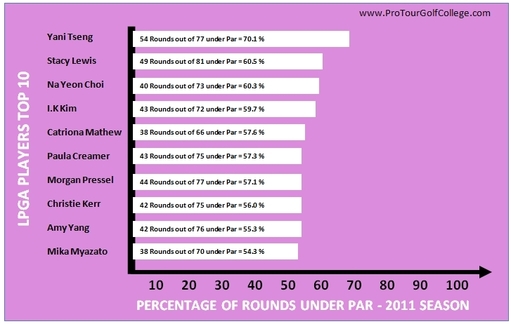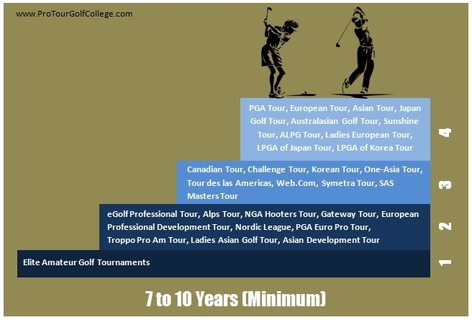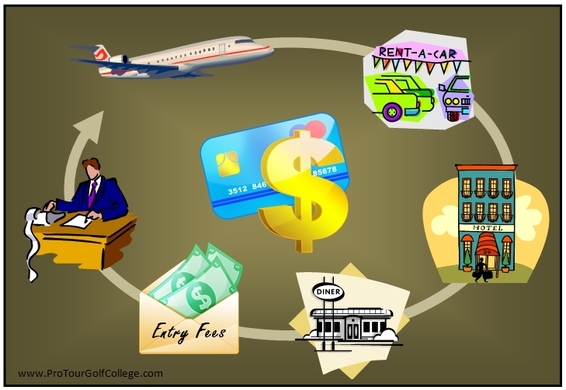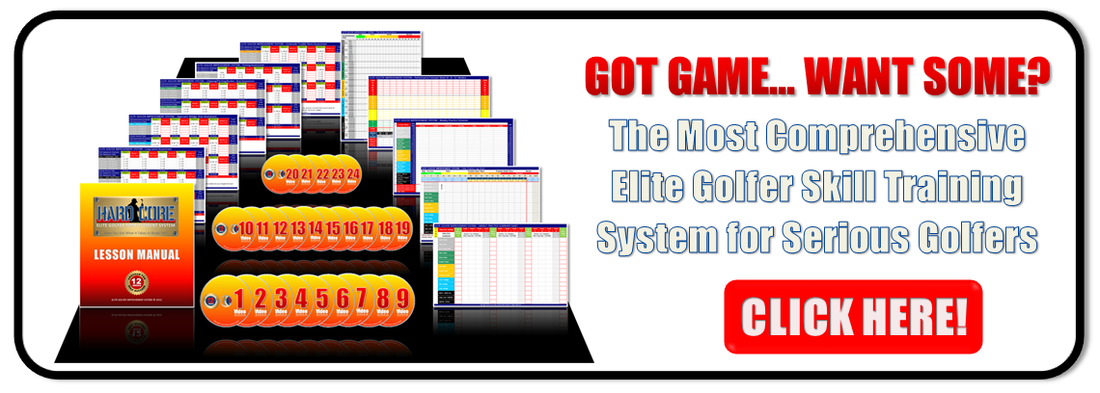 Ok so you’ve had enough of playing amateur tournaments for tin cups, micro wave ovens and TV’s and you want to step into the professional arena and play for pay. But are you really ready for it? Good on you for being ambitious enough to consider playing professionally, but be prepared for vast difference in the standard of play from the amateur ranks to professional ranks because they’re light years apart and it is no where near as glamorous as you might be thinking. Professional golf is one of the toughest careers you could ever consider pursuing. The mind-set for professional golf is relatively easy to understand - achieve a low golf score average in tournaments, but the application of this is extremely difficult to achieve. “I lived on the road for 15 years. It isn’t what friends and family that don’t travel for work think it is. Seldom if ever did I get to stop and smell the roses. I was being paid to produce, not vacation. Nights are the worst part. If you don’t really love what you are doing, the road will burn you up. And even then, you develop a love/hate relationship with the adventure. You love the excitement of the road, but dream of being home. When you do get home you can’t wait to get back out.” – 'Zimbello' (Psuedonym) commenting on the article in Forbes by Michael Noer “On the Edge: Money, Life and Loneliness on the Fringe of the PGA Tour” Here’s the link to read this excellent article. http://www.forbes.com/sites/michaelnoer/2012/02/08/ben-martin-pga-tour/ Professional golf whether at mini tour level or major tour level is extremely competitive and any amateur golfer-male or female that wishes to take this path needs to appreciate that from the time you turn professional it will take you at a minimum 7 to 10 or more years of hard work, dedication and patience to make it all the way to the major league. But wait I hear you say, what about Rory McIlroy or Lexi Thompson, they didn’t take 7 to 10 years to become world class professional golfers. Yes there are always exceptions to this rule – but very few! For the majority of elite level amateur golfers who turn professional the 7 to 10 year rule holds true. And there are absolutely no guarantees! The majority of the ambitious golfers who begin the journey from minor tours to major tours won’t make it all the way, as the attrition rate of professional golfers is very high because it’s one of the toughest ways in the world to earn your income. How many careers can you think of that you have to pay the price both in terms of effort and dollars before you get paid for your whole career? Amateur to Professional - How Good Do You Have to Be?  So how good do you have to be to consider turning professional? As an amateur golfer we tell our students at Pro Tour Golf College that at a minimum five out of ten of your competitive rounds (50 percent) in state and national ranked amateur competitions should be below par, and your highest score should not exceed three over par on championship level golf courses. We explain that if you don’t achieve this minimum standard you simply won’t make cuts in tournaments - plain and simple. This is particularly true on the men’s tours where the scoring tends average to be a little lower than the women’s tours. The cuts in professional golf tournaments will range from a high of 2 over par to a low of 5 under par, so this knowledge alone should guide your decision. How Much Does it Cost? At a bare minimum it will cost you over one thousand dollars each week to fly to a tournament site, accommodate and feed yourself and also travel to and from your tournament venue each day. The Web.Com Tour (Formally Nationwide Tour) costs at a minimum $75,000 per year and the PGA Tour about $110,000 per year before you make a cent! This is unless your tour is city based like a number of the larger mini tours in the US such as the The Gateway Tour and NGA Tour, in which case you can drive your car to the tournament venues each day and you won't have caddy costs to consider. Tournament entry fees to play on the larger mini tours in the US run out at more than 1000 dollars per tournament with an annual membership fee of anywhere from 750 to 1800 dollars depending on the tour. If you choose to be a non member of the tour you’ll pay around 1,300 per tournament. The example below is an income to expenses comparison of a professional golfer who finished 20th on the money list on The Gateway Tour in 2011 (Arizona Series) with earnings of $23,626.33. He made 13 of 17 cuts (76.5 %) and his scoring average for the 48 competitive rounds was 70.94, and he shot in the 60’s 31.2 percent of the time. Based on entry fees of around 1000 dollars per tournament, fuel costs, accommodation costs etc a conservative estimate of expenses for these 17 tournaments would be approximately 24,000 dollars. So this golfer would have more than likely broken even or possibly made a slight loss for the 17 competitive weeks. In the top ranking men’s and women's amateur golf tournaments with the strongest fields a good winning score for four rounds will be anywhere from 8 to 12 under par. But when you play on a minor professional tour that score could finish well down the list.  The male and female professional golfers competing on the mini tours around the world are great golfers and the scoring each week is red hot. Many of these professionals that make up the fields have been playing mini tours for years and are ‘tour hardened competitors,’ which is to say they have a lot of professional golf tournament experience. In-fact seasoned tour professionals are much more like golf warriors than golf competitors - they are focused, fearless and very serious about their business. Their performances on the golf course determine to a great extent whether they eat hamburger or steak, so they are extremely motivated to improve their competitive standing in every tournament they play in.  Have a look at the percentage of scores under par for the LPGA Players in this illustration left. (Click on photo to make it larger) You can see that Yani Tseng was under par 70 percent of the time. This is the standard that you should aim for if you want to make many more cuts than you miss, and many more dollars than you spend. They are under no illusion about what it takes to succeed on a professional golf tour; a very low winning golf score for 4 rounds of golf.
 As you can see (Left), the winning scores are a long way under par and this is what pro golf is all about. Developing your skills and influencing your performances to produce consistent under par scores on golf courses over 7000 yards in length for male golfers and 6,500 yards for female golfers is what it is all about, and this process for most golfers takes time, patience and money. Take a good look at the major tours and you’ll discover that many of the successful golfers worked their way up through the ranks from amateur tournaments to mini golf tours and then on to major golf tours. Sometimes professional golfers get the opportunity to make the step up to the big grade and it changes their life. John Daly is one example of this when whilst competing on the Hooters Tour he was informed that he got a start in the PGA Championship so he drove all night to Crooked Stick golf course in Indiana to play in the 1991 PGA Championship and then went on to win it! Many top level male and female golfers started their professional playing career on the mini tours. Take a look at this list of great male champions who all played on the NGA (Hooters) Tour before making the step up to the main tour. > Stewart Cink, the 2009 British Open Champion > Zach Johnson, the 2007 Masters Champion > Shaun Micheel, the 2003 British Open Champion > Ben Curtis, winner of the 2003 British Open > Jim Furyk, winner of the 2003 US Open > Lee Janzen, a two-time US Open winner > John Daly, a British Open and PGA Champion > Tom Lehman, winner of the British Open > David Toms, a past PGA Champion > Chad Campbell, the 2003 Tour Championship winner > Vaughn Taylor, a two-time Reno Tahoe Open winner > Craig Perks, winner of the TPC All these great golfers got their start on the pay for play tours and hundreds of others have as well over the years.  Professional golfers are specialists at low scoring and like most professions it takes a long time to learn the ropes. From amateur golf you start playing on the mini tours and development tours learning about yourself and your game. You will spend anywhere from one year to five years playing on this tier learning how to lower your competitive score average so you can make consistent cuts and checks. The next goal is to play good enough to qualify for 2nd tier events where the prize money increases substantially (so does the expenses) and the competition is tougher. ******************************************************************************************************************************************** At the time of writing, the Thailand Open on the One-Asia Tour was played at the Suwan Golf and Country Club, a 7,077 yard layout and to give you an idea of the level of competition the cut was 4 under par. The leader at the half way stage was Prom Meesawat at 15 under par, and the winner of the tournament was the Englishman Chris Wood with 23 under par. If you shot 10 under for this tournament you finished tied 48th. On the LPGA Tour the scoring was low for the Jamie Farr Toledo Classic. The winner was Ryu So-Yeon with 20 under par for four rounds with scores of 67 68 67 and a nine under par 62 in the final round. You needed to shoot par or better to play on the weekend in this tournament. ******************************************************************************************************************************************** You might play these 2nd tier events for three years or longer until you develop your skills and confidence to play well enough to qualify to play on a major golf tour like the PGA Tour or LPGA Tour. Right now you might be thinking that this seems like an aweful long time to make it onto a major tour but it is the reality of top level professional golf. The average age of a PGA Tour player is 35, so it is better to completely understand the learning process for professional golf before you take the plunge. And remember, if this is the downside of professional golf just think about the upside for a moment; you can play on tour and earn a great income for a very long time if you're really good. Hale Irwin is 67 years old and still making a very good income from professional golf. My advice is to take it one step at a time and with hard work, determination and a long term focus you might just get your shot at playing in the majors one day. Lawrie Montague and David Milne - Pro Tour Golf College Comments are closed.
|
Archives
June 2019
|
Proudly Supported By
Copyright © 2011 - 2018 Pro Tour Golf College
Website Managed By Golf Performance Media
All Rights Reserved
Website Managed By Golf Performance Media
All Rights Reserved





 RSS Feed
RSS Feed



